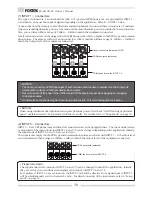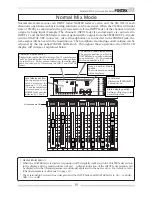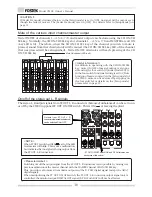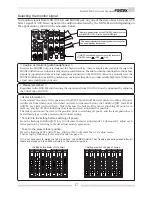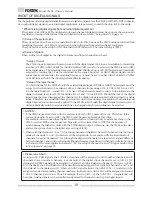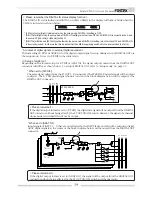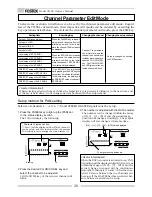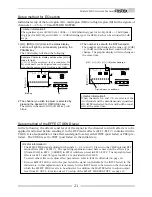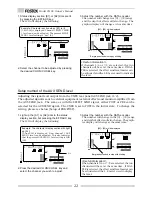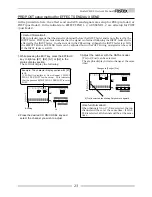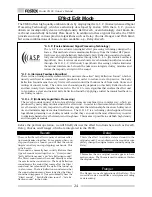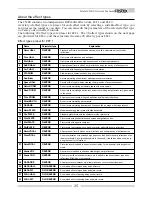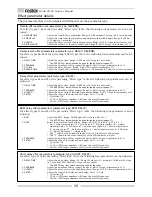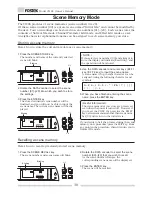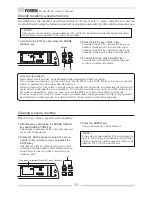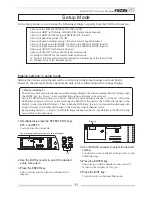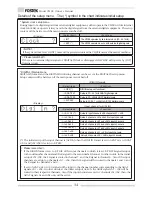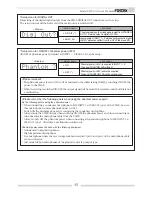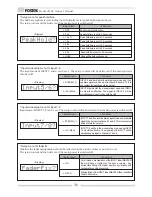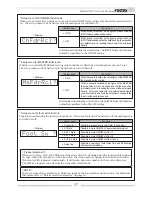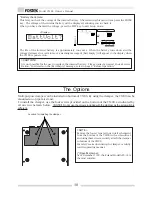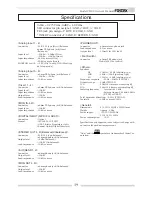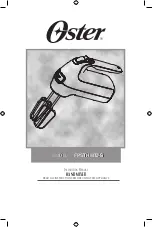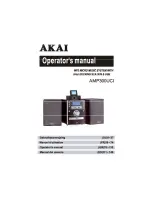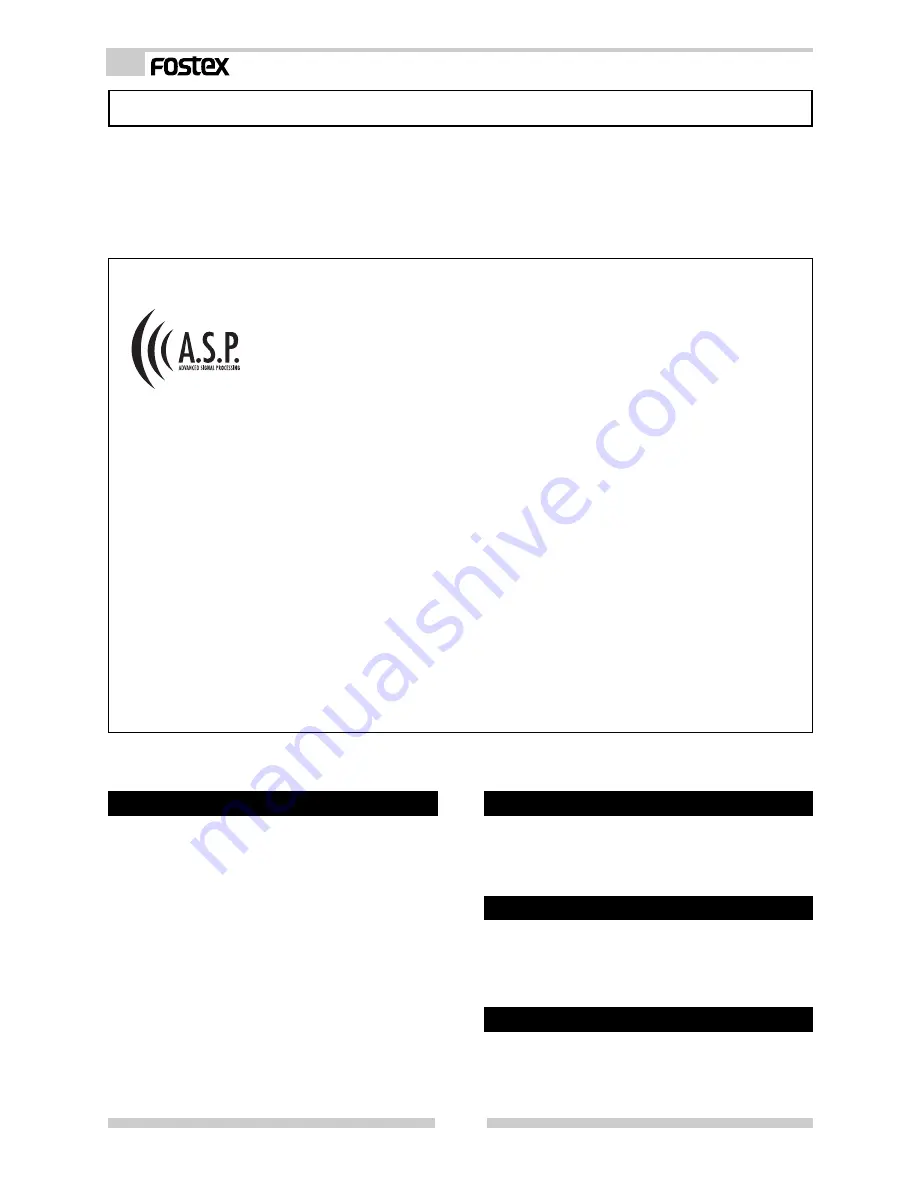
24
Model VM88 Owner’s Manual
Reverb
Delay
Chorus
Flanger
* A. S. P. (Fostex Advanced Signal Processing Technology)
The A. S. P. is an exclusive new digital effect processing technology designed by
Fostex. This method extracts maximum efficiency from the limited DSP power.
It achieves an overwhelmingly high density Early Reflection sound and wonder-
fully smooth High Dump response through the H. F. A. (Harmonic Feedback
Algorithm). Also, it carries out an elaborate reverb simulation with clear sounds
through the H. D. L. P. (Hi-Density Logarithmic Processing), which eliminates
the mutual interference between the numerous integrated delay modules and
reduce the impurity and girt of the sound.
Effect Edit Mode
* H. F. A. (Harmonic Feedback Algorithm)
There is one of indispensable elements in the natural echo called “Early Reflection Sound,” which is
usually sacrificed in commercial reverb products in order to reduce costs. (In practice, the Early
Reflection Sound means the very first reverberated sound that bounces back from walls, floors and
ceilings of concert halls). The entire reverb sound quality depends on this Early Reflection Sound
and how closely it can resemble the real echo. The H. F. A. is an algorithm that enables the effect unit
to reproduce a clear and natural Early Reflection Sound by applying an ideal harmonic feedback to
each delay module.
* H. D. L. P. (Hi-Density Logarithmic Processing)
The reverb sounds consist of lots of small delay elements combined in a complex way, which are
produced by many delay modules inside the effect unit. In order to obtain smooth and comfortable
reverb sounds, it is very important to efficiently organize the relationship between each delay mod-
ule and minimize negative mutual interference. The H. D. L. P. is a technology which applies efficient
logarithmic processing to each delay module, so that they can work in the most efficient way in order
to eliminate harmful reverb elements and roughness. This makes it possible to establish high density
and transparent sounds.
Before the partical operation, we will briefly discuss the effect functions here such as Reverb,
Delay, Chorus, and Flanger, which are integrated in the VM88.
The so called Reverb effect consists of various reflec-
tion sounds mixed together. For example, when you
clap your hands in a tunnel, you will hear the sound
linger even after you stop clapping your hands. This
is the Reverb.
The sounds we normally hear in daily life have three
types of sounds mixed together, i.e., “Direct sound,”
“Early Reflection sound” and “Late Reflection sound.”
The Direct sound means the sound directly reaches
the ears from the sound source. The Early Reflection
sound means the sound that comes after the Direct
sound and has rebound off the wall of the tunnel up
to a few times. The Late Reflection sound means that
the sound rebounds many times long after the Direct
sound has disappeared. Our ears normally hear the
“Direct sound” - “Early Reflection sound” - “Late Re-
flection sound” in the order.
The VM88 offers high quality ambient effects by employing the A. S. P. (Fostex Advanced Signal
Processing Technology), which is exclusively developed by Fostex. With the A. S. P., you can
obtain an incomparably clean and high density Hall Reverb, overwhelmingly clear Room Re-
verb and wonderfully hi-fidelity Plate Reverb. In addition to these typical Reverbs, the VM88
provides not only various practical algorithms such as Delay, Chorus, Flanger and Pitch Bend,
but some combinations of these are also available, e.g., Delay+Reverb.
The Flanger is one of applications of the Delay. This
is used to create a sound like a jet airplane ascending
or descending.
This makes the one original sound appear to have
many sources. The Chorus is used to widen or thicken
the original sound.
This is the effect to added a delayed sound to the
original sound. You can obtain a richer sound or com-
pletely change the original source sound by using the
Delay.

